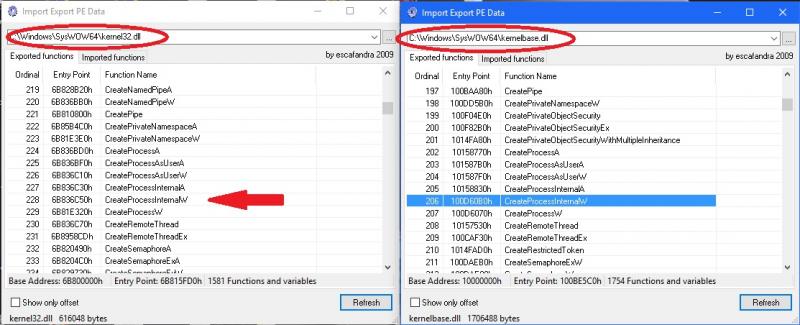Algo había cambiado en Win10 y como es una API indocumentada M$ no tiene porqué informar nada. Busqué en la red, pero no encontré nada, de esta forma tocaba usar el debugger y comparar direcciones de memoria de las API. El resultado es que Win10 usa la API exportada en KernelBase.dll y no la clásica Kernell32.dll. Una vez conocido este detalle el hook vuelve a funcionar.

Voy a poner un ejemplo hecho en delphi Berlin para resarcir la duda y aclarar la definición de esa API en delphi:
El ejemplo muestra como un hook a la API CreateProcessInternalW es capaz de interceptar distintas formas de ejecutar un proceso.
El misterio queda resuelto.
Saludos.















